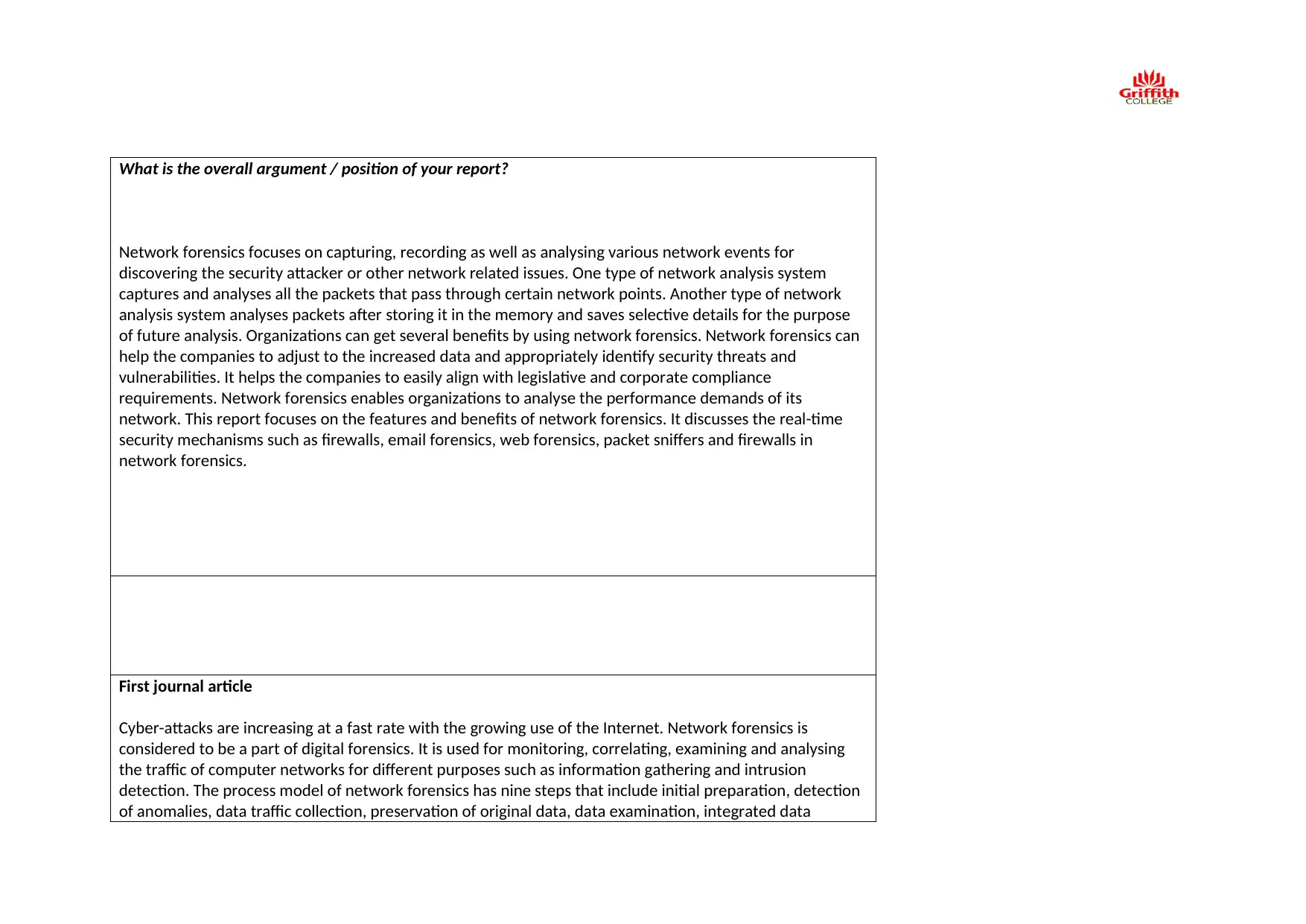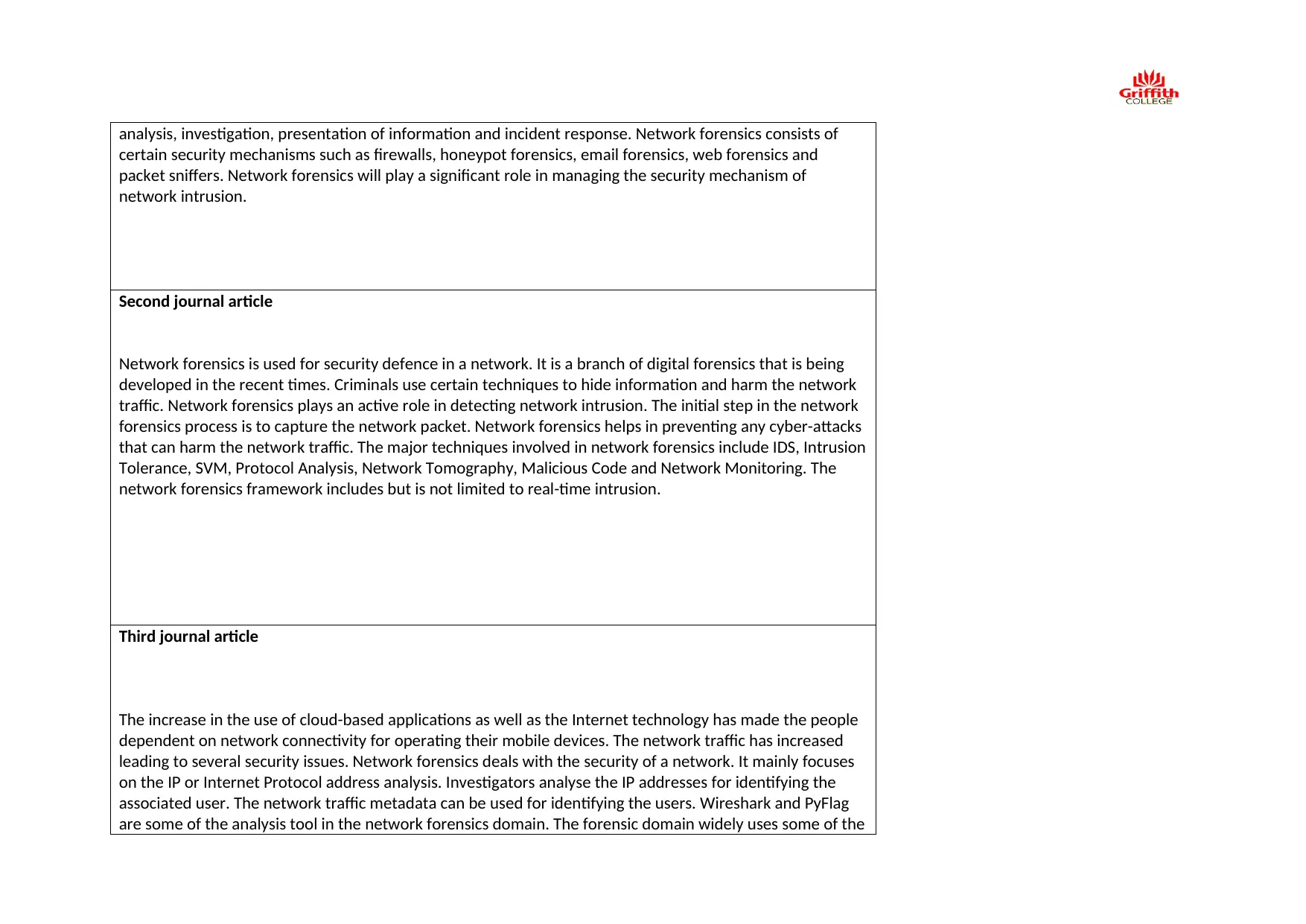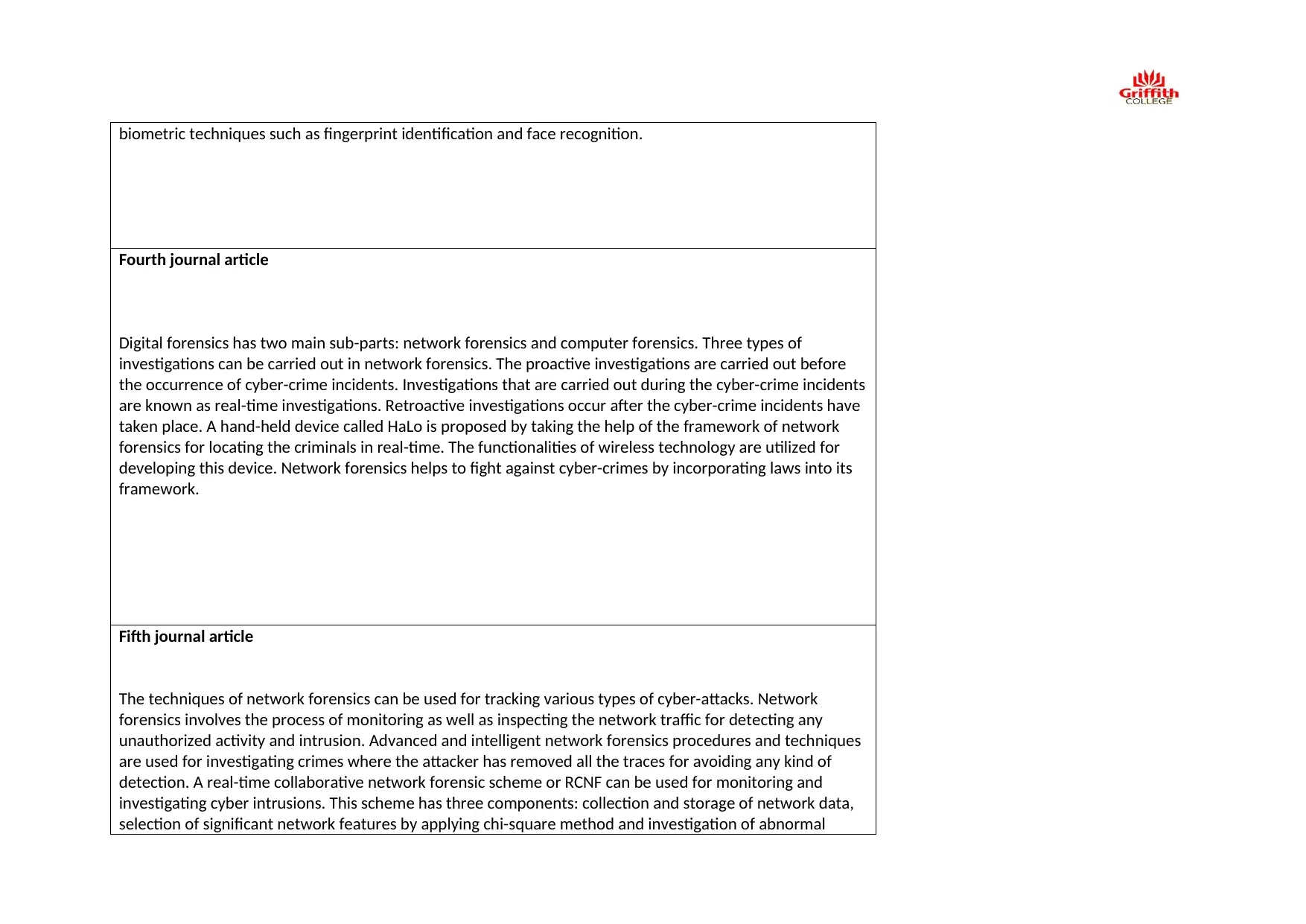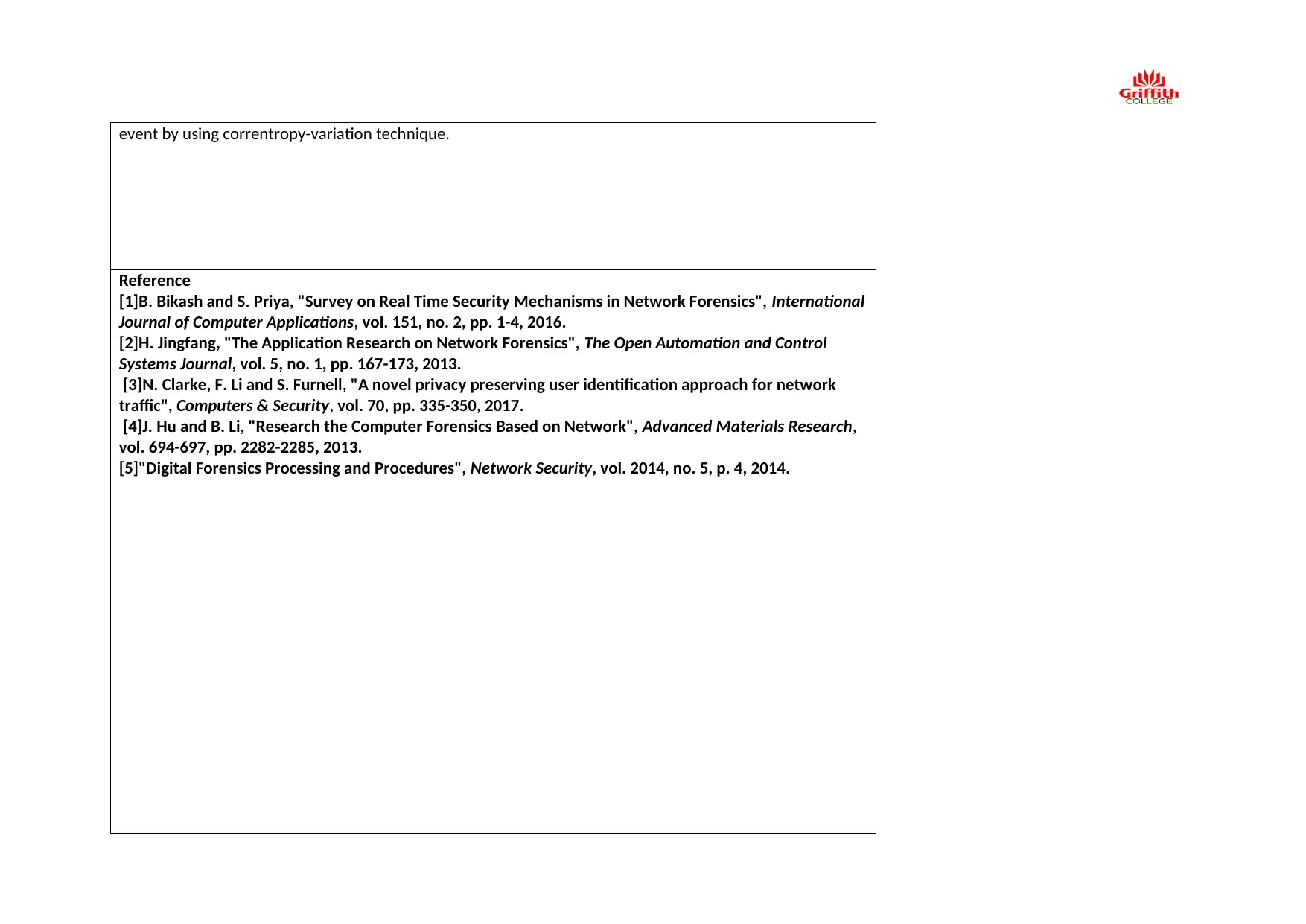Network Forensics Report: Real-Time Security Analysis and Techniques
VerifiedAdded on 2020/05/28
|5
|968
|73
Report
AI Summary
This report provides a comprehensive overview of network forensics, emphasizing its role in capturing, recording, and analyzing network events to identify security threats and vulnerabilities. It explores the benefits organizations gain from network forensics, including improved alignment with compliance requirements and the ability to analyze network performance demands. The report delves into real-time security mechanisms such as firewalls, email forensics, and packet sniffers. It references several journal articles that highlight the increasing prevalence of cyber-attacks, the importance of network forensics in digital forensics, and the various techniques and frameworks used for intrusion detection and prevention. The report also touches upon the use of IP address analysis, network traffic metadata, and biometric techniques in network forensics, concluding with a discussion of real-time collaborative network forensic schemes for monitoring and investigating cyber intrusions. This information is designed to help students and researchers understand the importance of network forensics in modern cybersecurity.
1 out of 5












![[object Object]](/_next/static/media/star-bottom.7253800d.svg)